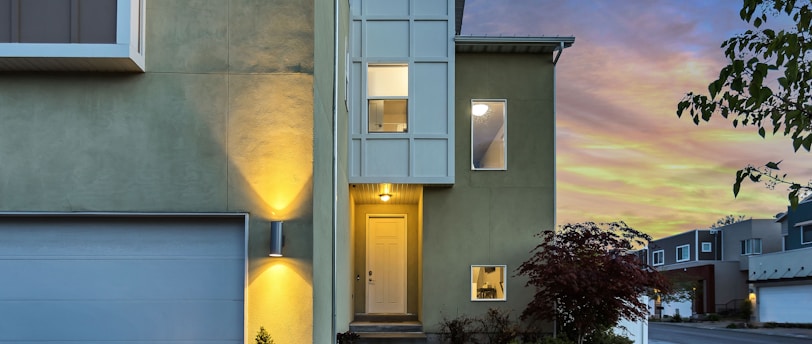Namibia’s Real Estate Market: A Mix of Growth and Challenges
Exploring Opportunities, Economic Drivers, and Emerging Trends in Namibia’s Property Sector
10/5/20243 min read


Namibia’s real estate market has been marked by steady growth in urban areas, especially in cities like Windhoek, Swakopmund, and Walvis Bay. While the sector has seen a rise in residential and commercial developments, it is shaped by broader economic factors, including global inflation, exchange rates, and Namibia’s natural resource economy. In this article, we explore the current landscape of Namibia’s real estate market, the key drivers behind it, and the challenges and opportunities for investors.
Urbanization and Demand in Residential Real Estate
With a population of around 2.6 million people, Namibia’s real estate market is relatively small, but it has experienced rising demand in urban centers. Windhoek, the capital city, leads the way with high demand for residential properties. The migration from rural areas to cities, driven by employment opportunities and better access to services, has caused a consistent need for housing in urban areas.
The Namibia Statistics Agency (NSA) reported that the urbanization rate in Namibia has been increasing, now reaching nearly 50%. This urban migration has led to the rise of middle-income housing developments. However, the gap between high-end residential properties and affordable housing remains a challenge, as housing affordability is a significant concern for many Namibians.
The Impact of Namibia’s Economy on Real Estate
Namibia’s economy is heavily reliant on its natural resources, particularly mining, agriculture, and fishing, with diamonds, uranium, and copper being key exports. The country’s economy has been affected by fluctuating global commodity prices, particularly in the mining sector. This has a direct impact on the real estate market, as job security in these industries influences demand for both residential and commercial properties.
Inflation and interest rates have also played a role in shaping the real estate landscape. According to the Bank of Namibia, the country's inflation rate has remained relatively high, increasing the cost of building materials and making it more expensive for developers to complete projects . Additionally, rising interest rates have made mortgage financing less accessible for middle- and lower-income households, slowing down home ownership rates.
Growth in Commercial and Retail Properties
The commercial real estate sector has seen some growth, particularly in retail spaces and office developments. Windhoek’s central business district (CBD) and the coastal towns of Swakopmund and Walvis Bay have been hotbeds of new commercial developments. However, due to the economic downturn exacerbated by the COVID-19 pandemic, the demand for office spaces has been reduced as companies adopt remote work policies.
Retail developments, on the other hand, continue to thrive, with shopping malls and complexes opening in both Windhoek and coastal cities. The Namibian government’s Vision 2030 initiative, aimed at achieving industrialization and economic growth, has supported infrastructure development, including real estate projects. However, slow economic recovery following the pandemic has hindered some of these larger commercial ventures .
Investment Opportunities and Challenges
Namibia offers a favorable investment environment for both local and international real estate investors. The government has put in place initiatives to attract foreign direct investment (FDI), particularly in real estate and infrastructure. As part of its Harambee Prosperity Plan, the Namibian government is working on housing projects that aim to address the housing shortage and stimulate the construction sector.
Nevertheless, challenges remain. The high cost of land, limited access to affordable financing, and the bureaucratic process for obtaining building permits pose hurdles for developers and investors alike. Additionally, there is a need for improved infrastructure in some areas, particularly in rural regions, to make them more attractive for development .
Future Trends in Namibia’s Real Estate Market
Looking ahead, Namibia’s real estate market will likely experience growth in several key areas. Urban residential developments are expected to continue expanding as more people migrate to cities, creating opportunities for developers in middle-income and affordable housing sectors. Commercial developments, particularly in retail, will also remain strong as urbanization fuels consumer demand.
Additionally, Namibia’s tourism sector has been recovering since the pandemic, creating a renewed interest in hospitality-related real estate, such as hotels and lodges, particularly in tourist hotspots like Etosha National Park and the Namib Desert.
Conclusion
Namibia’s real estate market offers promising opportunities, especially in urban residential and commercial developments. However, the market remains dependent on broader economic factors, including inflation, interest rates, and global commodity prices. For investors, understanding these dynamics and navigating the challenges of high land costs and financing limitations will be key to success in this evolving market.
Sources:
Namibia Statistics Agency (NSA), Urbanization Report 2023
Bank of Namibia, Economic Outlook 2024
Namibia Investment Centre, Harambee Prosperity Plan 2021-2025
Knight Frank Africa Report 2023
4o
Invest in Africa
Explore investment opportunities in Namibia's vibrant economy.
Connect
Discover
team@shofarbusinessconsultants.com
+264 (0) 81 335 4827
© 2025. All rights reserved.
“Who are these who fly like a cloud, And like doves to their roosts? Surely the coast lands shall wait for Me; And the ships of Tarshish will come first, To bring your sons from afar, Their silver and their gold with them, To the name of the Lord your God, And to the Holy One of Israel, Because He has glorified you.
Isaiah 60:8-9
